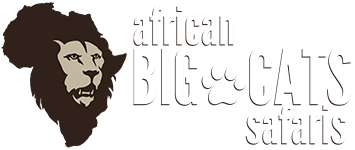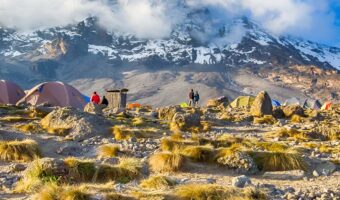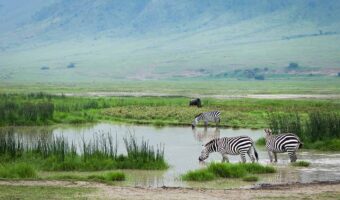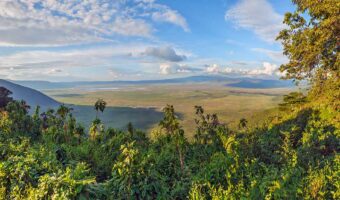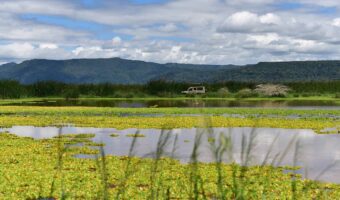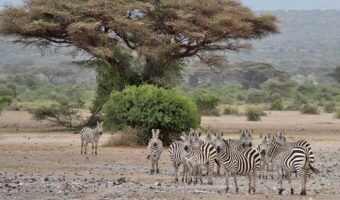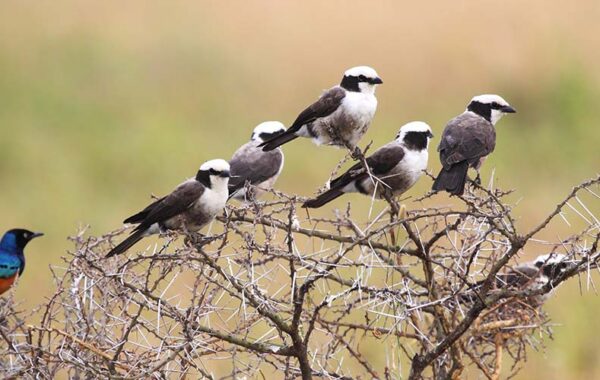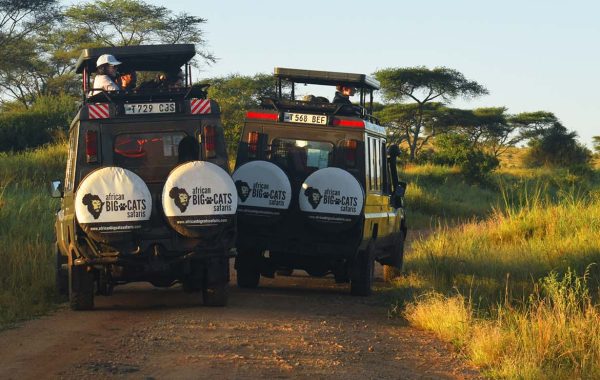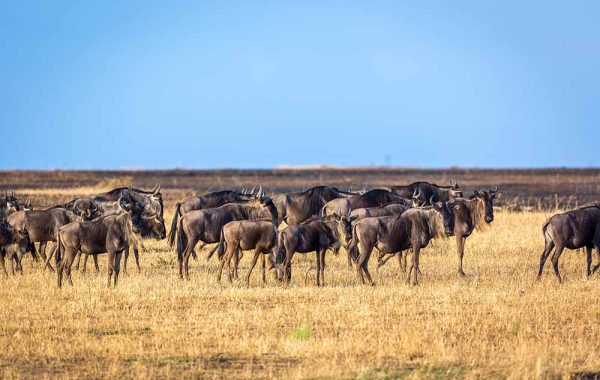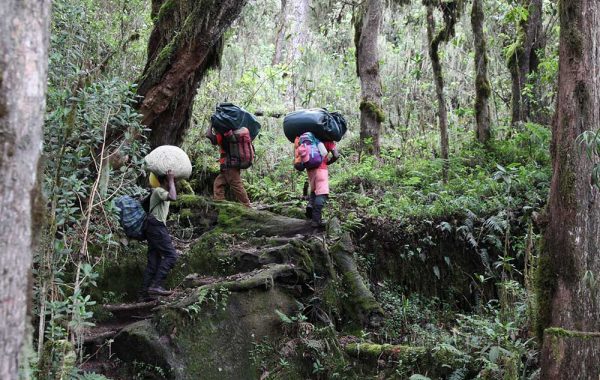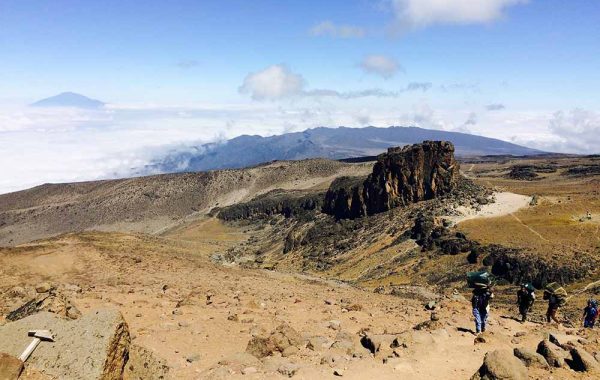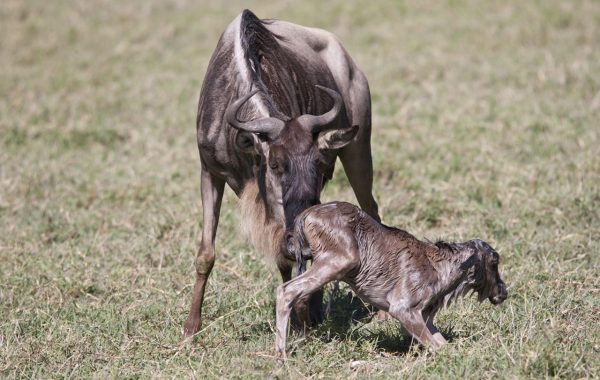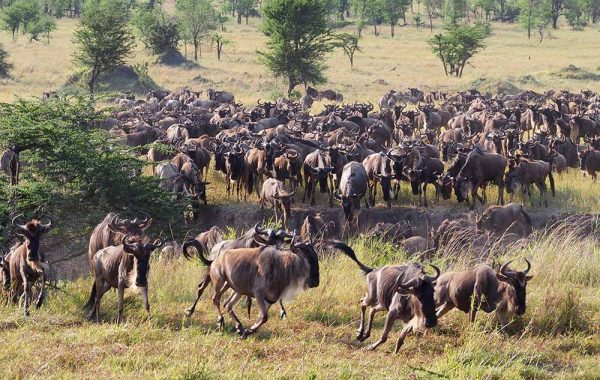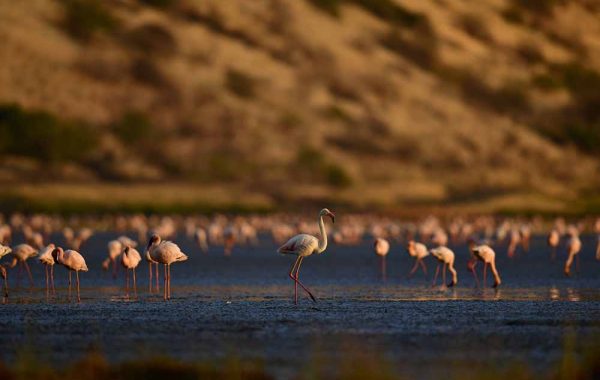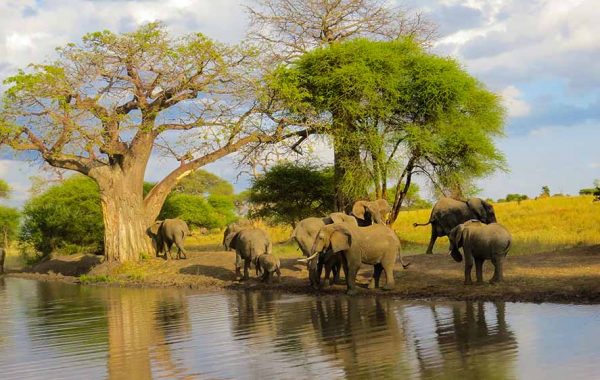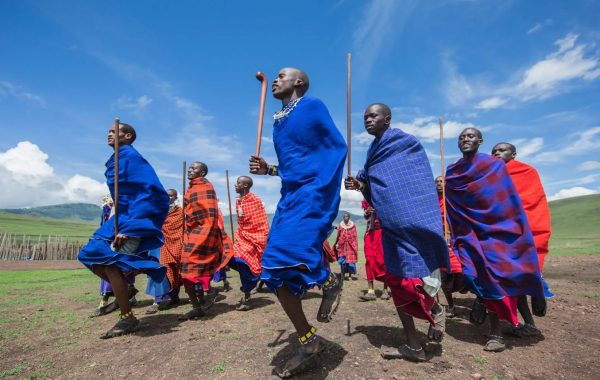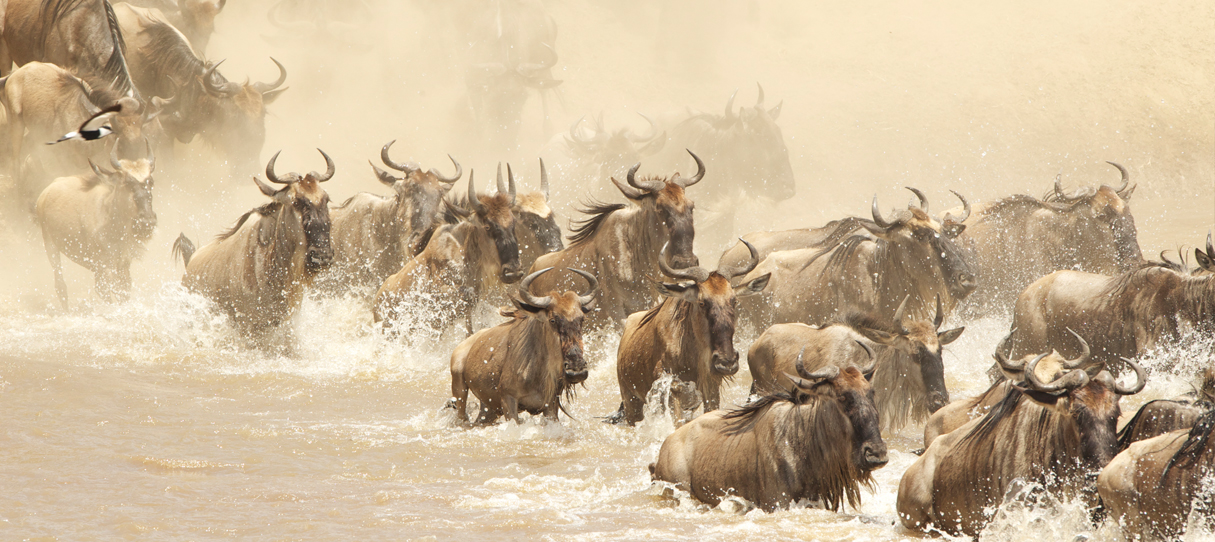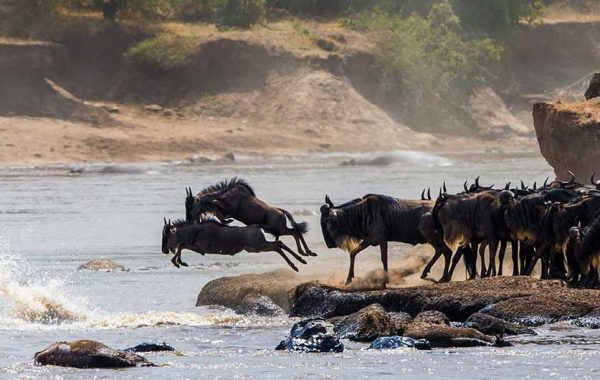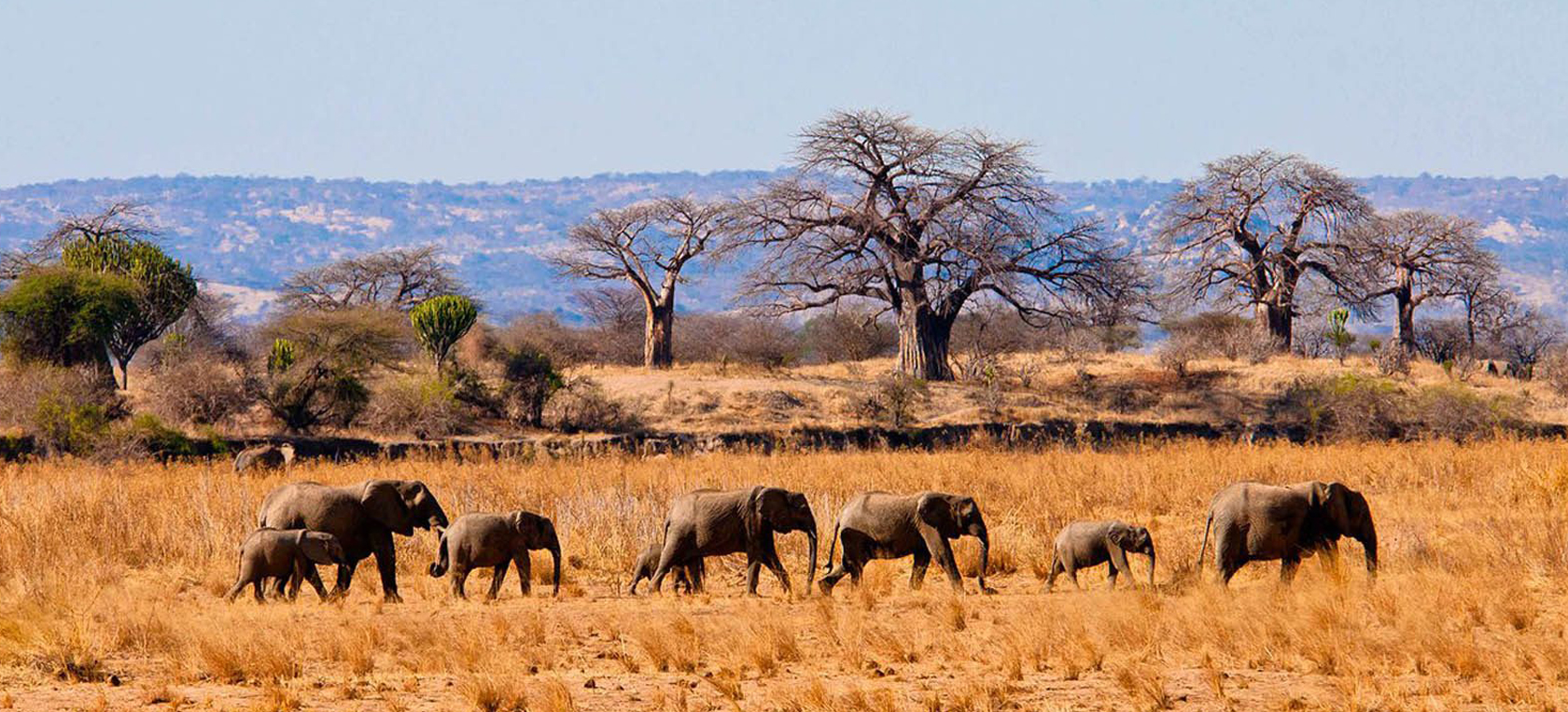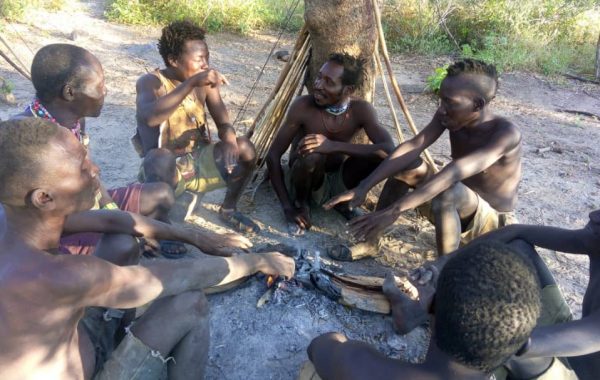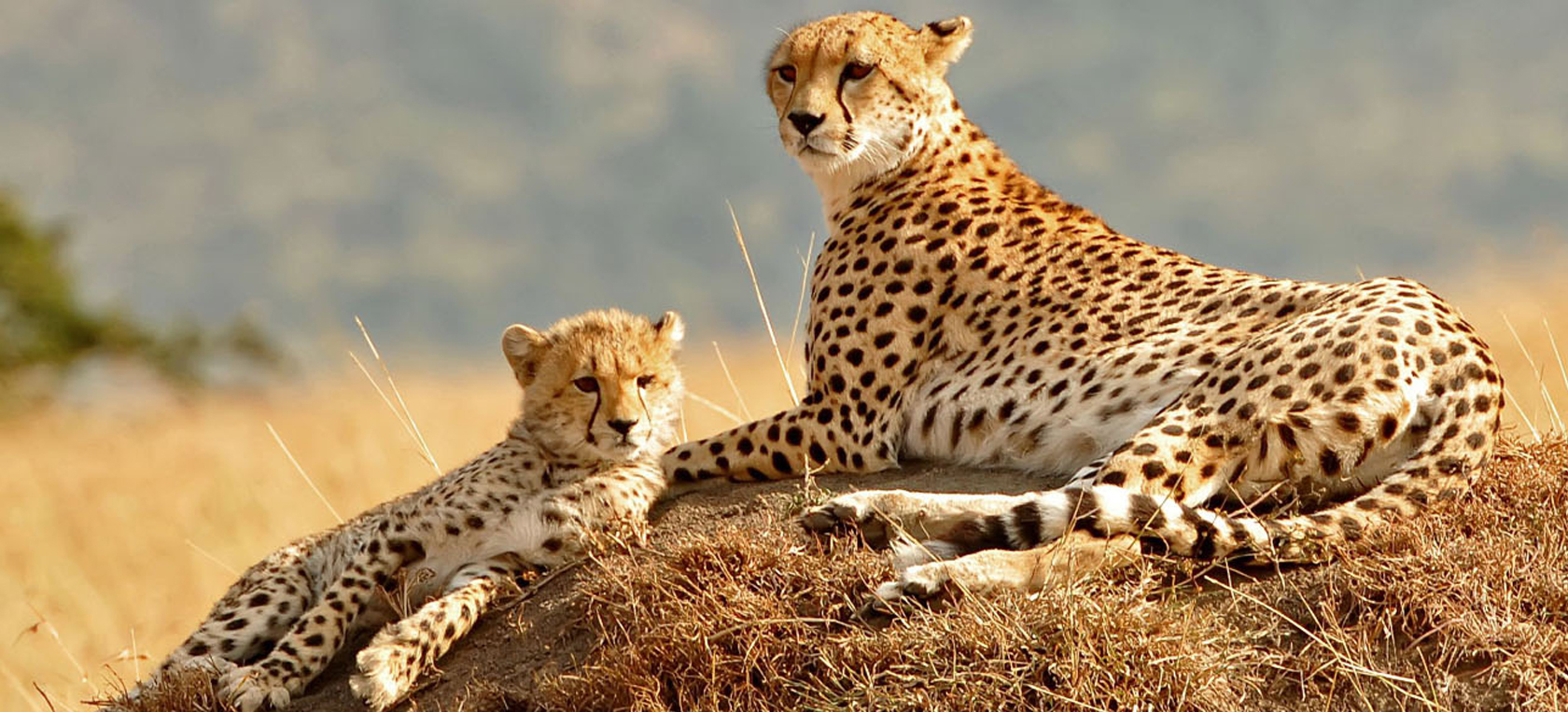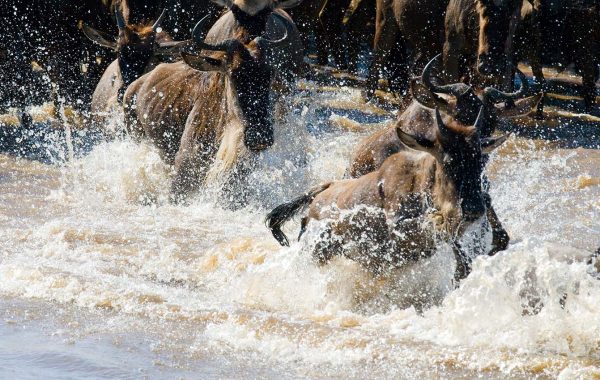12 Day Kilimanjaro Trekking Machame Route + Safari
OVERVIEW
Machame route or ‘whiskey route’ is one of the most popular routes to climb Kilimanjaro because it is very scenic and provides incredible views and landscapes.
There are no any parts that need one to use technical skills to complete the trekking. The total distance is approximately 62 kilometers from the beginning to the end of the trek (gate to gate). This route can be completed in 6 days and after that you will finish your adventure on Safari where you will visit Tarangire, Ngorongoro, Lake Manyara as well as Serengeti National Park.
Detailed Itinerary
DAY 1: Arrival at the airport - Machame Route + Safari
After arrival at the airport (Kilimanjaro / Arusha), your private driver guide will pick you up at the airport. He will transfer you to your accommodation for dinner and overnight awaiting for your Kilimanjaro Trekking via Machame Route + Safari adventure to start on the following day. In addition, your mountain guide will meet you at your accommodation for the briefing and equipment checkup.
|
Accommodation |
Mtoni River Lodge |
|
Meal Plan |
Bed & Breakfast |
DAY 2: Arusha to Machame Gate (1800m) - Machame camp (2850m)
Hiking time: 5 hours
Distance: About 7 km’s
Habitat: Montane forest
Early in the morning we drive to Machame gate which takes about 90 minutes. Your Machame Route + Safari adventure is about to begin. You will have lunch at the gate.
You start your ascent and enter the rain forest almost immediately. There is a strong possibility of rain in the forest, which will transform the trail into a very soggy, muddy, as well as slippery experience. Most of the time porters and cook happens to reach to the camping site before you for preparation of meals, and also setting of tents. It is particularly important that sometimes during the night temperatures can drop at Machame campsite.
DAY 3: Machame camp (2850m) - Shira cave (3750m)
Hiking time: 5 hours
Distance: About 7 km’s.
Habitat: Moorland.
Early in the morning after breakfast, the day is spent to reach Shira cave (3750 m) where you will have hot lunch. The night at this bare camp will even be colder than the previous night, with temperatures dropping. Furthermore, the trail take us for an hour or so to the top of the forest. Then for about two hours at a gentler gradient through the moorland zone. Hiking to this point you will be able to see in an easterly direction, the Western Breach with its particularly spectacular glaciers. You are now due west of Kibo and after a short hike you will reach the Shira cave in the evening walk.
DAY 4: Shira (3750m) - Lava Tower (4600m) - Barranco camp (3900m)
Hiking time: 7 hours
Distance: About 11 km’s
Habitat: Semi desert.
The route now turns east into a semi desert and rocky landscape surrounding Lava Tower, where you reach an altitude of 4600m after about a five hours walk.
Lunch is served in a designated area before ascending the rocky scree path to Lava Tower (4600m). Definitely, the toughest day so far. It is normally around this point, where for the first time, some climbers will start to feel symptoms of breathlessness, irritability, as well as headaches.
After lunch you descent again by almost 700m to the Barranco camping area and after reaching the high altitude of 4600m at Lava Tower, the true acclimatization benefit of this day undeniably becomes clear.
This descent to Barranco camp takes about two hours and offers great opportunities to take some beautiful photographs of the Western Breach and Breach Wall. The camp is situated in a valley below the Breach and Great Barranco Wall, which should provide you with a memorable sunset while you wait for the preparation of your dinner.
DAY 5: Barranco Hut (3900 m) to Karanga Valley Camp (3995 m) to Barafu camp (4667 m)
Hiking time: 8 hours
Distance: About 10 km’s
Habitat: Alpine desert
After breakfast, we leave Barranco and continue on a steep ridge passing the Barranco Wall, to the Karanga Valley campsite where we will have lunch before we proceed. Then, we leave Karanga and hit the junction which connects with the Mweka Trail. We continue up to the Barafu camp. At this point, you have completed the South Circuit, which offers views of the summit from many different angles.
Here we make camp, rest, enjoy dinner, and also prepare for the summit day. The two peaks of Mawenzi and Kibo are to be seen from this position.
DAY 6: SUMMIT ATTEMPT, Barafu camp (4667m) - Uhuru Peak (5895m) - Mweka (3100m)
Hiking time: 7 hours to reach Uhuru Peak & 7 hours to descend to Mweka.
Distance: About 14km
Habitat: Stone scree and ice-capped summit.
You will wake up around 2300hrs, and after some tea and biscuits you start climbing to Uhuru peak into the night. This is, unquestionably, the most engaging moment of your Machame Route + Safari adventure.
You will head in a northwesterly direction and ascend through heavy scree towards Stella Point on the crater rim. This 6-hour walks to Stella point is for many climbers, mentally and physically the most challenging on the route. At Stella Point (5757m) you will stop for a short rest and will be rewarded with the most magnificent sunrise you are ever likely to see (weather permitting).
From Stella Point you will normally encounter snow all the way on your 1-hour ascent to Uhuru Peak. The time you will spend on the summit will depend on the weather conditions. Do not stop here for too long, as it will be extremely difficult to start again due to cold and fatigue. Enjoy your accomplishment and a day to remember for the rest of your life!
The walk back to Barafu from the summit, takes about 3 hours. Here you will have a well-earned but short rest and collect the rest of your gear, before heading down to Mweka hut (3100m). The route is not difficult and will take you down the rock and scree path into the moorland and eventually into the forest. Additionally, the camp is situated in the upper forest and mist or rain can be expected in the late afternoon. Dinner and washing water will be prepared.
DAY 7: Mweka camp (3100m) - Mweka Gate (1980m) - Machame Route + Safari
Hiking time: 3 hours
Distance: About 2 km’s
Habitat: Forest
After an early and well-deserved breakfast, it is a short 3-hour and scenic hike back to the Park gate. At Mweka gate you sign your name and details in a register. This is also where successful climbers receive their summit certificates. Those climbers who reached Stella Point (5757m) are issued with green certificates and those who reached Uhuru Peak (5895m) receive gold certificates.
From the Mweka Gate you will continue down into the Mweka village, normally a muddy 3 km (1 hour) hike. At the Mweka Gate, you will have lunch and celebration with your mountain crew.
After that, you will be transferred to a hotel in Arusha for hot shower, dinner and overnight. This is the end of the first part of your Machame Route + Safari adventure.
|
Accommodation |
Mtoni River Lodge |
|
Meal Plan |
Full Board |
DAY 8: Arusha to Tarangire National Park
Early morning after breakfast, we depart to Tarangire National Park. The Park is named after the Tarangire River which runs through it. This ‘river of warthogs’ is the only source of water for wildlife in the region during the dry season.
In places, the vegetation is quite dense, including elephant grass, acacia woodlands, as well as lush groundwater forest. Furthermore, the Park is well known for its elephant families, which can often be seen congregating by the river. You may also see giraffe, bushbuck and hartebeest. These animals are closely followed by a range of predators, including lions and leopards.
There are more breeding species of birds found in Tarangire National Park than anywhere else on the planet!
After Lunch and an extensive gamedrive, we head for our comfort partner lodges in Karatu for dinner and overnight.
|
Accommodation |
Eileen’s Trees Inn |
|
Meal Plan |
Breakfast, Lunch & Dinner |
DAY 9-10: Ngorongoro crater to Serengeti National Park
Early morning after breakfast, we depart to Ngorongoro crater. When you first see Ngorongoro Crater, it looks like a forgotten world. Concealed by the steep volcanic walls is a pristine wilderness including sweeping savannah, pockets of acacia woodland, as well as glistening lakes and swamps.
The Crater was created when a large volcano exploded and collapsed in on itself two to three million years ago. It is famous for both its geological delights and for being a natural reserve which is home to some of the densest large mammal populations in the whole of the African continent.
Undoubtedly the drive down into the Crater is an adventure in itself. When you reach the Crater floor, you quickly find yourself amongst large numbers of wildebeest, zebra, gazelle, and also more than 500 bird species. The Crater provides you with the best chance of seeing the endangered black rhino, which can sometimes be spotted in the open grasslands. After Lunch, we drive to the Serengeti National Park.
You will spend 2 nights inside Serengeti National Park.
|
Accommodation |
Intimate Camp Seronera |
|
Meal Plan |
Breakfast, Lunch & Dinner |
DAY 11: Serengeti National Park to Karatu
Early morning after breakfast, we continue with our en-route game drive in the Serengeti to Karatu. Serengeti National Park is undoubtedly the best-known wildlife sanctuary in the world, unequaled for its natural beauty and scientific value. In addition, it has the greatest concentration of plains game in Africa. But it is the migration for which Serengeti is perhaps most famous.
Over a million wildebeest and about 200,000 zebras flow south from the northern hills to the southern plains for the short rains every October and November, and then swirl west and north after the long rains in April, May and June.
Late afternoon, drive straight to Karatu through Ngorongoro Conservation Area.
|
Accommodation |
Eileen’s Trees Inn |
|
Meal Plan |
Breakfast, Lunch & Dinner |
DAY 12: Lake Manyara National Park to Arusha
Early morning after breakfast, we depart to Lake Manyara National Park. It is undeniably an unspoilt paradise. Moreover, it is best known for its abundance of birds and tree-climbing lions. The dramatic western escarpment of the Rift Valley forms the Park’s western border. To the east is the shallow, alkaline Lake Manyara. In addition, the lake covers a large area of the park, flooding and drying with the seasons and is home to thousands of flamingos during the rains.
The name Manyara comes from the Maasai word ‘emanyara’, a popular plant which is used to build the protective enclosure around a family homestead (boma).
The Park’s vegetation is undeniably diverse, ranging from savannah to evergreen forest. On your exploration of the park you may see giraffe, zebra, wildebeest, buffalo, and also elephant. If you are particularly lucky, you can spot lions lounging in the trees. After Lunch and an extensive game drive, we head back to Arusha or to the airport to catch your onwards flight.
All in all this marks the end of your epic Kilimanjaro Trekking Machame Route + Safari adventure.
If you would like us to book an extra accommodation in Arusha, we’re happy to do that.
If you liked 12 Day Kilimanjaro Trekking Machame Route + Safari, you might also like 7-Day Serengeti Wildebeest Migration River Crossing.
COST FOR 2025
|
2 pax |
3 Pax | 4-6 Pax |
| $4,785 per person | $4,150 per person |
$3,845 per person |
COST FOR 2026
| NUMBER OF PAX | 2 PAX | 3 PAX | 4 PAX |
| HIGH SEASON | 4395 | 3965 | 3655 |
| LOW SEASON | 4395 | 3965 | 3655 |
What’s included?
- 2 Nights’ accommodation in Arusha
- All camping equipment (including tents, mattress, sleeping bags, & pillows)
- private mountain guide
- private chef
- porters
- trekking poles
- first aid kit
- rescue fees
- portable toilet
- Kilimanjaro National Park Fees & camping fees
- All Government Tax.
- All nights’ accommodation
- Private Safari Guide, Private Land Cruiser 4 x 4
- All Park Fees during safari
- AMREF (Flying Doctors Insurance)
- Unlimited Drinking Water during safari
What’s not included?
- Other trekking gears except trekking poles
- Tips
- Personal items (souvenirs, travel insurance, visa fees and other personal items)
- International Flights
